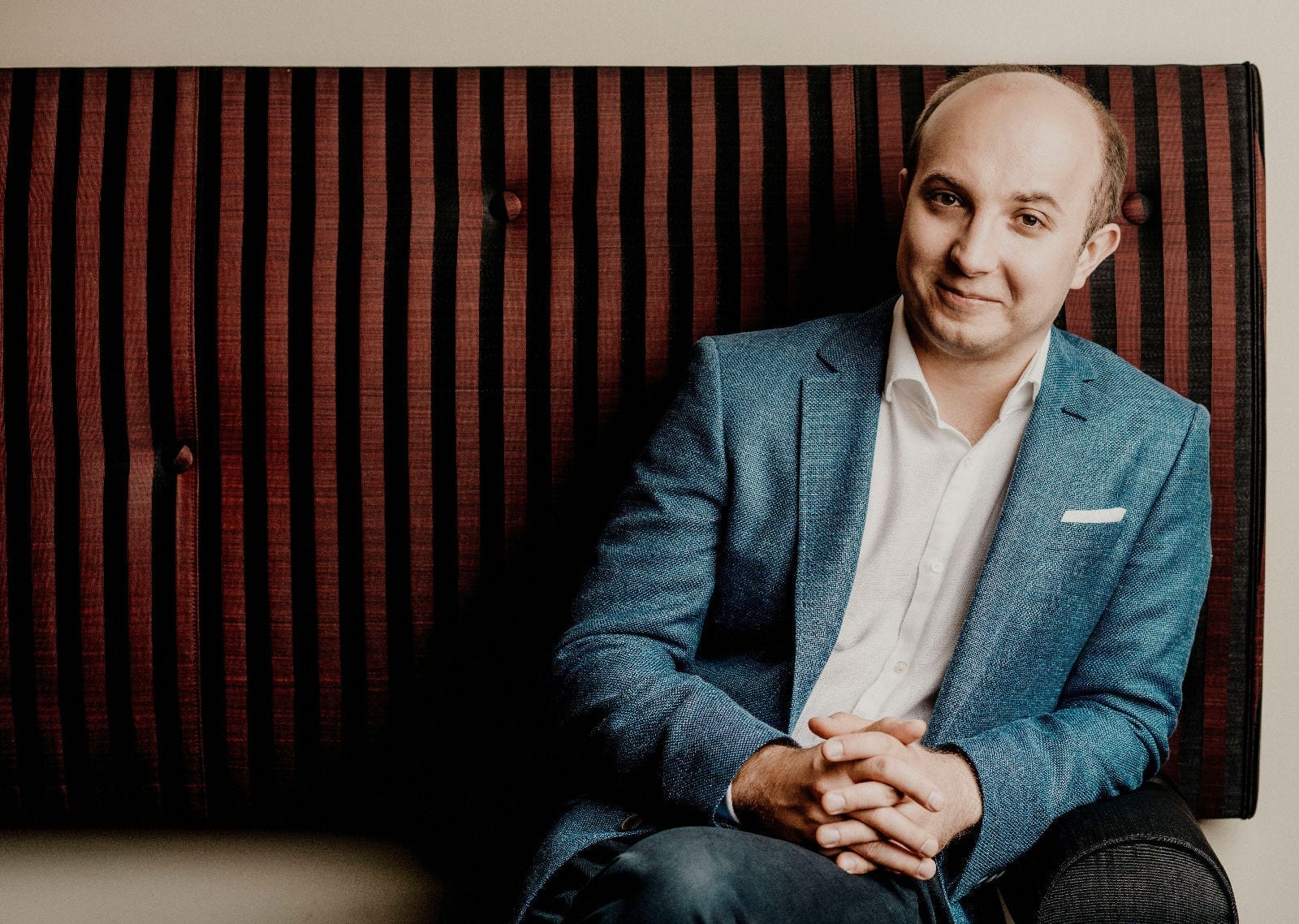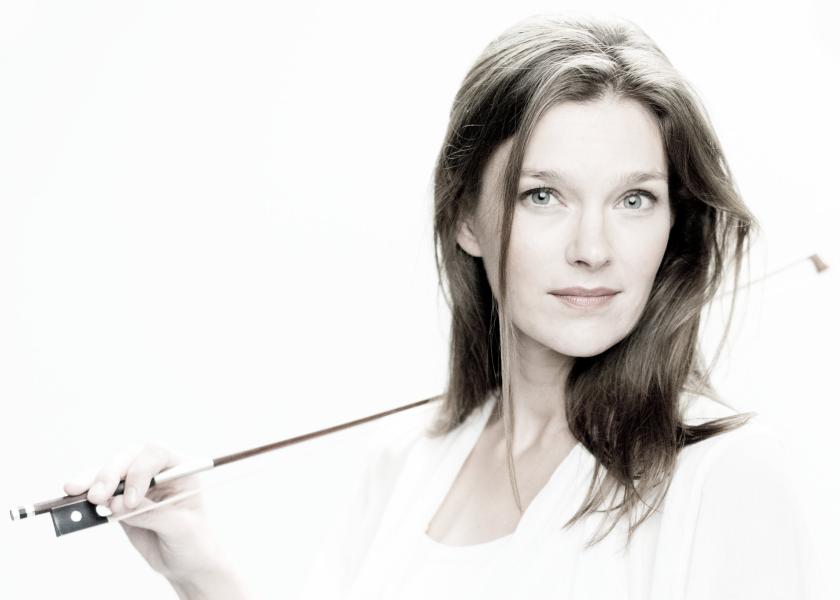Can it happen? That one comes away from a concert with the sense that all of the truth, the shape, the beauty and the urgency of some great works from the classical repertoire has been conveyed as well as is humanly possible? That the programme itself has been a completely satisfying and thought-out whole and has held the attention throughout? Yes, it really can. This Wigmore Hall recital by violinist Janine Jansen and pianist Alexander Gavrylyuk (pictured below by Marc Borggreve) of works by the Schumanns, Brahms and Franck was an evening to cast aside doubts and niggles; to appreciate a concert for all the experience, the work, the quality, the unanimity and artistry of two musicians that has gone into it.
The mercurial mood-shifting in Robert Schumann’s first Violin Sonata of 1851 came across wonderfully. This was a performance which had room to be improvisatory and skittish, and brought out Schumann’s habits of interrupting and cross-accenting himself, and yet it always had a sense of direction and natural flow. I was reminded of how Jansen has explained that in her early lessons with the Latvian-born violinist Philippe Hirschhorn he would insist that she find at least five ways of playing a phrase. The building of variety into Schumann’s obsessiveness and canonic repetition, second nature to Jansen, was compelling. Both violinist and pianist brought lightness and lyricism to Clara Schumann’s Three Romances from 1853. And in the context of the programme, they provided an ideal transition and point of repose between the knottier and more complex structures of the Robert Schumann Sonata and the Brahms Second Sonata. In Clara Schumann’s third Romance in particular, Jansen and Gavrylyuk gave a sense of gentleness, of really wanting to allow the music to have its space to breathe.
Both violinist and pianist brought lightness and lyricism to Clara Schumann’s Three Romances from 1853. And in the context of the programme, they provided an ideal transition and point of repose between the knottier and more complex structures of the Robert Schumann Sonata and the Brahms Second Sonata. In Clara Schumann’s third Romance in particular, Jansen and Gavrylyuk gave a sense of gentleness, of really wanting to allow the music to have its space to breathe.
In Brahm’s Second Sonata, there were delights throughout. Brahms always requires a shared understanding of the weighting and of the meaning of every phrase across different instruments, and Jansen and Gavryluk invariably and constantly brought their common purpose and intent to the piece. Perhaps their most remarkable achievement was the way they shaped, paced, and inexorably built the intensity in the final movement. The variety in tone colour that Jansen can bring to such music is just mesmerising.
In Cesar Franck’s Violin Sonata a compelling sense of the architecture of the piece came through. For the final canonical movement to make sense, its certainty, the way it is settled so comfortably and so deeply into A major, has to stand as a response to all of the uncertainty and doubt that has gone before it, and that was exactly the priority that Jansen and Gavrylyuk had set, particularly in the rhetorical urgency of the third movement.
In the context of the whole recital, the bookending of Schumann’s First Sonata and the Franck was very clever indeed. Both works have canonic imitation in their DNA, but their expressive purposes are polar opposites. The recital had taken us all the way from Schumann’s obsessive doubt to Franck’s gleaming certainty.
Lili Boulanger’s Nocturne, played as an encore, and dedicated sincerely and anonymously to someone in last night’s audience who had brought Jansen inspiration, was a vehicle for the expression both of lyricism and intensity. In its final section, it took us, in the words of Rilke’s ninth Sonnet to Orpheus, to a place where “the voices are eternal and soft.” There was no better place to have been last night than Wigmore Hall.














Add comment